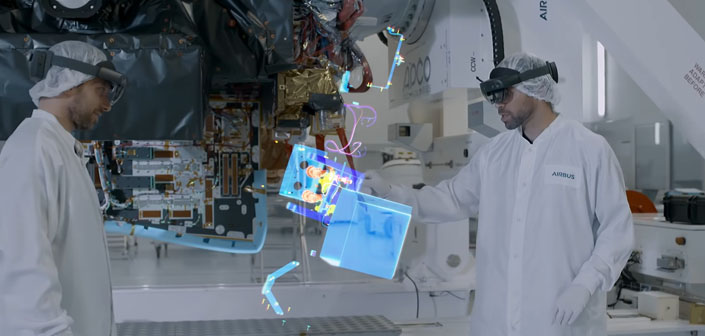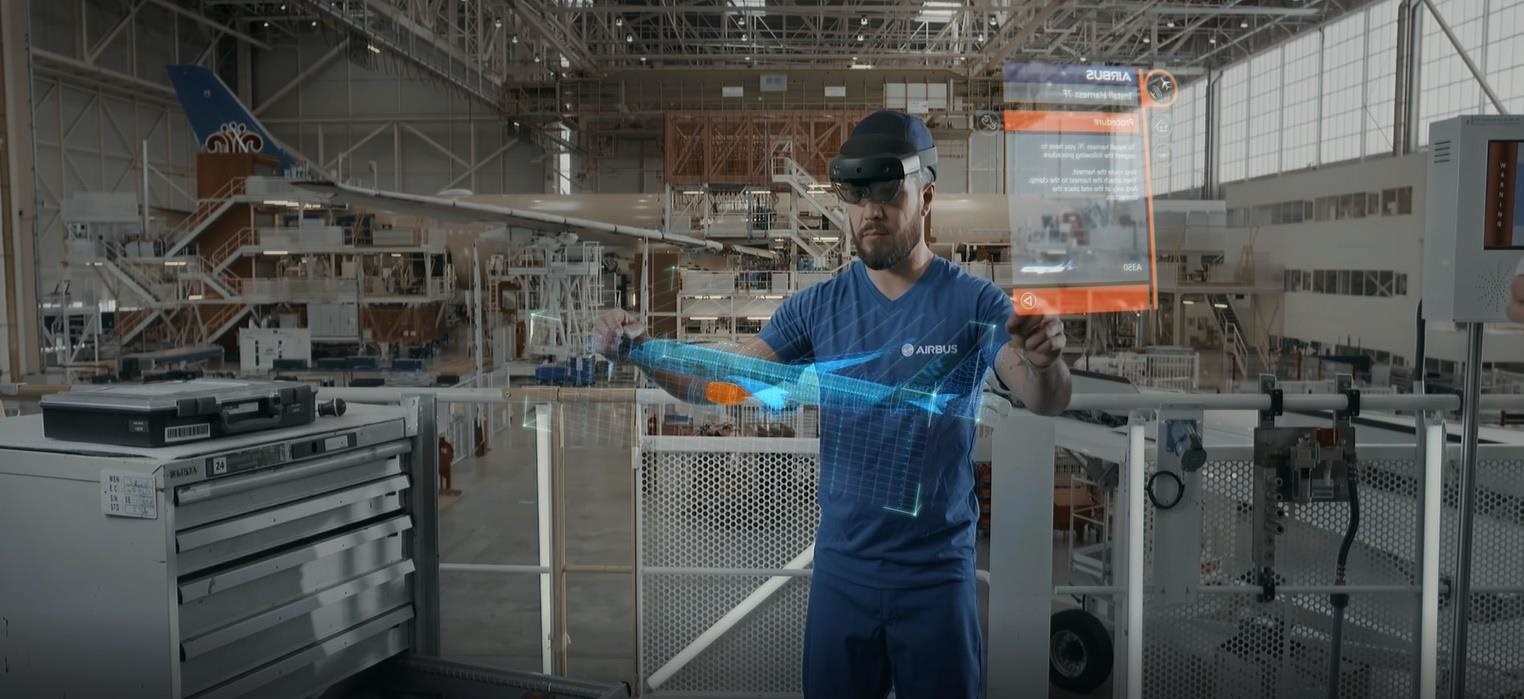Earlier this year, Microsoft unveiled the new, cheaper and upgraded HoloLens 2. Airbus, the aerospace giant, has been exploring mixed reality for several years and started working with Microsoft on mixed reality solutions four years ago. The launch of Microsoft’s newest mixed-reality headset provided Airbus with an opportunity to further explore applications of mixed-reality and tp help Microsoft further develop its technology and hardware.
For Airbus, this comes at a time where the ability to grow effectively and efficiently is of paramount importance, according to Jean-Brice Dumont, executive vice president of engineering at Airbus.
“In the last forty years, we developed ten thousand aircraft, and we have to deliver twice that amount in the next twenty years,” says Dumont, “To face this challenge, we intend to make intense use of mixed reality and that’s why we’ve partnered with Microsoft.”
Applying this technology in training, design, and manufacturing has helped Airbus to identify more than 300 use cases which increase quality, safety, and security. For example, accessing information and instructions hands-free, or reducing training expenses, such as in equipment or traveling.

“The level of human error is significantly reduced, and in aerospace, increased quality is increased safety—and needless to say, security goes with that,” Dumont added.
Using HoloLens 2 also provides Airbus with more efficient procedures. According to the company, the mixed-reality headset allowed cutting manufacturing time by a third while improving quality. For example, Airbus reduced time spent on testing designs to see if they are ready for manufacture by 80 percent.
Apart from using the HoloLens 2 to increase productivity, Airbus announced it will begin selling off-the-shelf applications, including training, remote collaboration, and maintenance solutions, built through the company’s own experience with the AR headset. The first one is a mixed reality training program to help maintenance operators and cabin crews learn in a 3D holographic environment and access instructions, heads-up, and hands-free, while on the job.
Airbus also wants to virtually connect participants from the defense and aerospace fields to quickly share space data and interact with complex virtual environments to plan and prepare ahead of missions.
All this research and advancements within the mixed-reality world add up to Airbus’ objective to become a world leader in digital services for the aerospace industry. It should also explain the company’s past interest in other mixed-reality technologies, such as the Varjo VR-1.
“This is really a way for us to lead our digital transformation. It’s multifold, but the use of mixed reality and HoloLens 2 are one of the key assets for Airbus in the future,” Dumont said.






